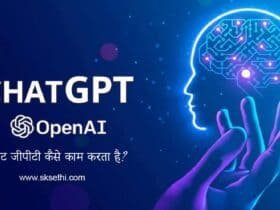What is a computer ?

A computer is an electronic machine which is able to perform the following tasks :
- accept the data by the user.
- process the data according to the given set of instructions.
- store and give output according to the user’s requiremet.
Uses of computer
Computers are extensively used in banks, shopping complex, schools, railways, airports, offices and even at home. But you know present day’s computer is entirely different from earlier devices that were invented for doing calculations. It ran on a long path of development. Lets learn about its evolution.
Steps toward Modern Computing Throughout the ancient world, people used devices such as notched bones, knotted twine and the abacus to represent data and perform various sorts of calculations.
First Staps : Calculators
During the sixteenth and seventeenth centuries, European mathematicians developed a series of calculators that used clockwork mechanisms and cranks. As the ancestors of today’s electromechanical adding machines, these devices weren’t computers in the modern sense. A calculator is a machine that can perform arithmetic functions with numbers, including addition, subtraction, multiplication and division.
steps toward Modern Computing : A Timeline Quipa (15th and 16th centuries)
At the height of their empire, the Incas used complex chains of knotted twine to represent a variety of data, including tribute payments, lists of arms and troops, and notable dates in the kingdom’s chronicles.
Abacus (4000 years ago to 1975)

Abacus was used by merchants throughout the ancient world. Beads were used to represent figures (data). By moving the beads according to rules, the user can add, subtract, multiply or divide. The abacus remained in use until a worldwide day of cheap pocket calculators put the abacus out of work.
Pascal’s calculator (1642)

French mathematician and philosopher Blaise Pascal, the son of an accountant, invents an adding machine to relieve the tedium of adding up lonfigures.
Leibniz’s calculator (1674)
Pascal’s calcultar German philosopher Gottfried Leibniz invents the first mechanical calculator capable of multiplication.
Jacquard’s loom (1804)
French weaver Joseph-Marie Jacquard creates an automatic, programmable weaving machine that creates fabrics with richly detailed patterns. It is controlled by means of punched card.
Babbage’s difference engine
In (1822), English mathematician and scientist Charles Babbage designed a complex, clockwork calculator capable of solving equations and printing the results. Despite repeated attempts, Babbage was never able to get the device to work.
Hollerith’s tabulating machine (1890)
It was created to tally the results of the U.S. Census, this machine uses punched cards as a data input mechanism. The successor to Hollerith’s company is International Business Machines (IBM).
Zuse’s Z1 (1938)
German inventor Konrad Zuse creates a programmable electronic calculator. An improved version, the Z3 of 1941, was the world’s _ first calculator capable of automatic operation.
Mark I (1943)
In a partnership with Harvard University, IBM creates a huge, programmable electronic calculator that used electromechanical relays as switching devices known as Mark l.
Second Stage : The Technological Edge (Electronics)
Today’s computers are automatic, in that they can perform most tasks without the need for human intervention. They require a type of technology that was unimaginable in the nineteenth century. The technology that enables today’s computer industry is called electronics.
From the 1950’s, the computer age took off in full force. The years since then have been divided into periods or generations based on the technology used.
First Generation Computers (1951-58) : Vacuum Tubes
These machines were used in business for accounting and payroll applications. Valves were unreliable components generating a lot of heat (still a problem in computers). They had very limited memory capacity. Magnetic drums were developed to store information and tapes were also developed for secondary storage.
They were initially programmed in machine language (binary). A major breakthrough was the development of assemblers and assembly language.
Second Generation (1959-64) : Transistors
The development of the transistor -revolutionised the development of computers. Invented at Bell Labs in 1948, transistors were much smaller, more rugged, cheaper to make and far more reliable than valves. Core memory was introduced and disk storage was also used. The hardware became smaller and more reliable. Another
major feature of the second generation was the use of highlevel programming languages such as FORTRAN and COBOL. These revolutionised the development of software for computers.
Third Generation (1965-71) : Integrated Circuits (ICs)
IC’s were again smaller, cheaper, faster and more reliable than transistors. Speeds went from the microsecond to the nanosecond (billionth) to the Pico-second (trillionth) range. IC’s were used for main memory despite the disadvantage of being volatile. Minicomputers were developed at this time.
The number of transistors that be fabricated on a chip is referred to as the scale of integration (SI). Early chips had SSI (small SI) of tens to a few hundreds. Later chips were MSI (Medium SD : hundreds to a few thousands. Then came LSI chips (Large SI) in the thousands range.
Fourth Generation (1971s): VLSI (Very Large SI)
VLSI allowed the equivalent of tens of thousand of transistors to be incorporated on a single chip. This led to the development of the microprocessor a processor on a chip.
Intel produced the 4004 which was followed by the 8008, 8080, 8088 and 8086 etc. Other companies developing microprocessors included Motorolla (6800, 68000), Texas Instruments and Zilog.
Personal computers were developed and IBM launched the IBM PC based on the 8088 and 8086 microprocessors.
Mainframe computers have grown in power Memory chips are in the megabit range VLSI chips had enough transistors to build 20 ENIACs. Secondary storage has also evolved at fantastic rates with storage devices holding gigabytes
(1000Mb – 1 Gb) of data.
On the software side, more powerful operating systems are available such as UNIX. Fourth generation languages (4GLs) make the development process much easier and faster. Languages are also classified according to generations from machine language (1GL), assembly language (2GL), high level languages (3GL to 4Gls).
Fourth Generation Continued (1990s) : ULSI (Ultra Large SI)
ULSI chips have millions of transistors per chip. For example, the original Pentium had over 3 million and this has more than doubled with more recent versions. This has allowed the development of far more powerful processors.
A fifth generation ?
If there is a fifth generation, it has been slow in coming. After all, the last one began in 1975. For years, experts have fo astthat the trademark of the next generation will be artificial intelligence (Al), in which computers exhibit some of the characteristics of human intelligence. But progress towards that goal has been disappointing.
The Future
Developments are still continuing. Computers are becoming faster, smaller and cheaper. Storage units are increasing in capacity. Distributed computing is becoming popular and parallel computers with large numbers of CPUs have been built. The networking of computers and the convergence of computing and communications is also of major significance.
From Silicon to CPUs !
One of the most fundamental components in the manufacturre of electronic devices, such as a CPU or memory, is a switch. Computers are constructed from thousands to millions of switches connected together. In modern computes, components called transistors act as electronic switches






